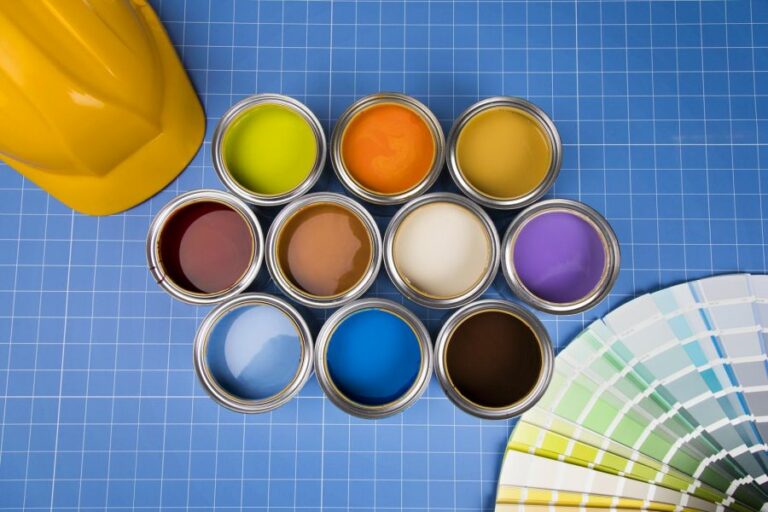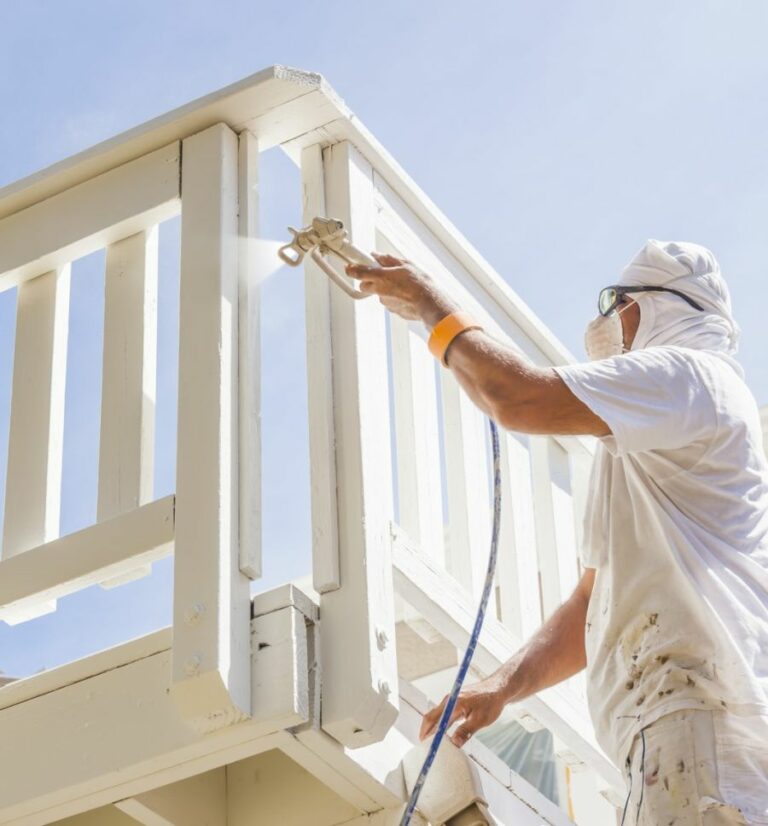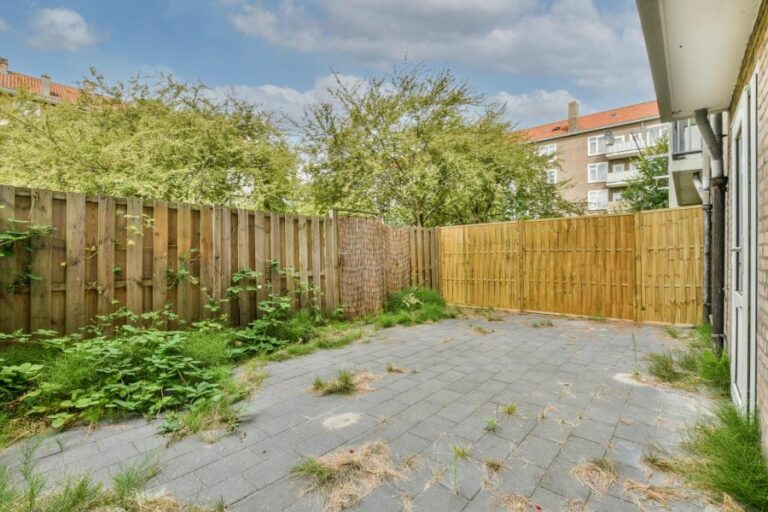Ultimate Outdoor Wood Paint Guide: Tips, Techniques, Reviews
Discover the secrets to a long-lasting, stunning outdoor living space with our comprehensive guide to wood paint for outdoor projects. From choosing the right product to application methods, we’ll delve into the world of exterior wood paint and how it enhances aesthetics and provides essential protection against weather, decay, and pests. With our expert advice and tips, you’ll be equipped with the knowledge needed to create your dream backyard oasis that stands up to the elements and the test of time.
Wood paint outdoor:
This comprehensive guide on wood paint for outdoor projects highlights the importance of choosing the right paint for aesthetic appeal and long-lasting protection. Key types of wood paint include exterior latex, oil-based, acrylic, and deck and siding paint. Factors to consider when selecting the best wood paint are surface type, weather conditions, aesthetic appeal, and maintenance.
Proper surface preparation is crucial, such as cleaning, sanding, filling gaps or cracks, and applying a primer. The guide also offers tips for application, including using the right tools, painting in suitable conditions, applying multiple coats, and allowing for proper drying time.

Discover the perfect wood paint for outdoor projects as we explore various types, colors, and applications. Learn invaluable tips on durability and weather resistance while enhancing the beauty and longevity of your outdoor wooden surfaces.
Contents
- 1 Wood Paint for Outdoor Projects: A Comprehensive Guide
- 2 Determining the Optimal Paint Choice for Exterior Wood Applications
- 2.1 • Factors to Consider When Choosing Paint for Outdoor Wood
- 2.2 • Top Recommendations for the Best Paint for Outdoor Wood
- 2.2.1 – Best All-Rounder: Behr Premium Plus Exterior Paint & Primer in One
- 2.2.2 – Best for Weather Resistance: Sherwin-Williams Duration Exterior Acrylic Coating
- 2.2.3 – Best for UV Protection: Benjamin Moore Aura Exterior Paint
- 2.2.4 – Best for Ease of Application: Glidden Premium Exterior Paint
- 2.2.5 – Best for Environmentally Friendly: ECOS Exterior Satin Wall Paint
- 2.3 • Conclusion
Wood Paint for Outdoor Projects: A Comprehensive Guide
The right paint choice is crucial for aesthetic appeal and long-lasting protection when working on an outdoor wood project. Selecting the best wood paint for your specific project can be overwhelming, considering the wide range of products available.
We will dive into various types of wood paint for outdoor use, discuss how to choose the best one for your project and provide valuable application tips.
• Understanding Different Types of Wood Paint
There are several types of wood paint available for outdoor use. Understanding their key features and differences will help you decide which suits your project best.
– Exterior Latex Paint
Exterior latex paint is water-based and known for its durability, ease of application, and quick drying time. It is an ideal choice for most wood projects due to its flexibility, resistance to peeling and cracking, and ability to withstand harsh weather conditions.
– Oil-Based Paint
Oil-based paint is solvent-based and offers superior durability for wooden surfaces exposed to sunlight, moisture, and general wear and tear. However, it takes significantly longer to dry compared to latex paint, and it may crack and peel if the wood surface contracts and expands due to temperature changes.
– Acrylic Paint
Acrylic paint is water-based and often recommended for outdoor wood surfaces because of its durability and resistance to fading, cracking, and peeling. It dries quickly and offers excellent color retention.
– Deck and Siding Paint
Deck and siding paint is specifically formulated for use on exterior wood surfaces. This type of paint offers exceptional durability, resistance to weathering, and the ability to lengthen the lifespan of your wood project.
• How to Choose the Right Wood Paint for Your Outdoor Project
Here are several factors to consider when selecting the best wood paint for your project:
- Surface Type: The kind of wood you are working with strongly affects the kind of paint you need. For example, pressure-treated wood requires a paint compatible with the preservatives used in the wood.
- Weather Conditions: Your local weather conditions are essential in choosing the appropriate paint. You will want UV protection paint if your area is hot and sunny. If moisture is a concern, choose a paint that provides enhanced waterproofing.
- Aesthetic Appeal: Consider the overall look you desire for your project. Some paints deliver a glossy finish, while others leave a matte or satin appearance. Assess the design aesthetic you aim for and select a paint that aligns with your vision.
- Maintenance: Evaluate how much maintenance you will perform on the painted surface. Some finishes may require more frequent maintenance than others or demand recoating within a shorter time frame. Be sure to choose a paint with a maintenance schedule that you find practical.
• Preparing the Wood Surface for Painting
Before applying any paint, thorough surface preparation is crucial to ensure optimal results. Follow these steps to prepare your wood surface for painting:
- Clean the surface: Use a stiff brush or pressure washer to remove dirt, mildew, and loose paint. Ensure the surface is completely dry before moving on to the next step.
- Sand the surface: Sanding the wood surface helps create a proper paint adhesion. Use medium-grit sandpaper for smooth surfaces and coarse-grit sandpaper for rough surfaces.
- Fill any gaps or cracks: Use a suitable wood filler to fix any holes or cracks in the surface. Allow the filler to dry, then sand the area smoothly to create a seamless finish.
- Apply a primer: Depending on your chosen paint, a primer may be necessary to ensure proper paint adhesion and durability. Consult the paint manufacturer’s instructions to determine if a primer is required.
• Tips for Applying Wood Paint Outdoors
Once your surface is prepared, follow these tips to ensure a successful and long-lasting paint job:
- Choose the right tools: Using the right brushes, rollers, and other painting equipment is crucial to achieving a smooth and consistent paint application. Consult the paint manufacturer’s guidelines for recommended tools.
- Paint in the right conditions: Avoid painting in extreme temperatures, high humidity, or under direct sunlight. Adverse conditions can negatively impact the paint’s drying time and overall performance.
- Apply multiple coats: Applying several thin coats of paint results in better coverage and durability than a single thick coat. Follow the manufacturer’s instructions for recommended drying time between coats.
- Allow for proper drying time: Be patient and allow the paint to dry completely before exposing the surface to foot traffic, furniture, or other potentially damaging factors.
In conclusion, selecting the best wood paint for your outdoor project is crucial for achieving a successful and long-lasting result.
By understanding the various types of paints available, considering factors like weather conditions and maintenance, preparing the wood surface properly, and following best practices for painting, you can create a beautiful and durable outdoor wood project that will stand the test of time.
Determining the Optimal Paint Choice for Exterior Wood Applications
As an experienced homeowner, DIY enthusiast, and paint expert, I understand the importance of choosing the right paint for outdoor wood surfaces. With the right choice, your wooden structures can look amazing and withstand the test of time.
I will discuss the factors you should consider when selecting the best paint for outdoor wood and recommend top-performing products from my experience.
• Factors to Consider When Choosing Paint for Outdoor Wood
– Durability
Outdoor wood surfaces are exposed to harsh weather conditions like sunlight, rain, humidity, and temperature fluctuations. Therefore, your chosen paint must be durable enough to withstand these environmental elements.
– UV Protection
UV rays can degrade paint films, causing fading, chalking, and loss of gloss. Look for paints with UV inhibitors that protect against harmful rays and maintain the color and finish of your wooden surfaces.
– Moisture Resistance
Moisture is a significant threat to outdoor wood, as it can cause rot, mildew, and fungal growth. Choose paint with excellent moisture resistance to protect your wood and maintain its structural integrity.
– Ease of Application
Some paints can be more challenging to apply than others. Choose a paint that is easy to apply, with good leveling and flow properties, to achieve a professional-looking finish.
– Cleanup
Oil-based paints often require solvents for cleanup, which can be a hassle. If you prefer an easy-to-clean-up paint, consider water-based formulas that can be cleaned with soap and water.
• Top Recommendations for the Best Paint for Outdoor Wood
Now that you know what factors to consider, let’s discuss some of the best paints for outdoor wood I’ve come across in my experience.
– Best All-Rounder: Behr Premium Plus Exterior Paint & Primer in One
Behr Premium Plus is a water-based paint with excellent coverage, durability, and UV protection. The built-in primer helps the paint adhere well to the wooden surface and eliminates the need for a separate primer, saving time and effort.
I recommend the semi-gloss sheen for outdoor wood, as it offers excellent resistance to dirt, moisture, and mildew while providing a beautiful, shiny finish.
– Best for Weather Resistance: Sherwin-Williams Duration Exterior Acrylic Coating
Sherwin-Williams Duration is an excellent choice for those seeking weather resistance, especially in harsh climates. This paint offers superior durability, excellent UV protection, and a self-priming feature.
The advanced acrylic resin technology protects your wood from moisture and temperature fluctuations, making this paint ideal for outdoor wood surfaces.
– Best for UV Protection: Benjamin Moore Aura Exterior Paint
Benjamin Moore Aura is a premium paint with outstanding UV protection thanks to its Color Lock technology. This paint maintains its rich color and gloss even after years of exposure to sunlight.
In addition to its excellent UV resistance, Aura has remarkable durability and mildew resistance, making it an excellent choice for outdoor wood projects.
– Best for Ease of Application: Glidden Premium Exterior Paint
Glidden Premium is an affordable option that is easy to apply and offers excellent coverage. Its acrylic latex formula provides durable protection and resists chipping and peeling.
Though it doesn’t have the same level of UV protection as other options on this list, Glidden Premium offers an excellent finish and protection for wood surfaces in moderate climates.
– Best for Environmentally Friendly: ECOS Exterior Satin Wall Paint
ECOS Exterior Satin Wall Paint is a fantastic option for those who prioritize eco-friendliness. With zero VOCs, this paint is better for the environment and has no odor, making it safe for you and your family.
Although eco-friendly, ECOS still delivers solid durability, UV protection, and water resistance, ensuring your wood surfaces are well-protected and look great.
• Conclusion
Selecting the best paint for outdoor wood doesn’t have to be a daunting task. Consider crucial factors such as durability, UV protection, moisture resistance, ease of application, and cleanup, and choose a paint that best suits your specific needs.
From my recommendations, Behr Premium Plus, Sherwin-Williams Duration, Benjamin Moore Aura, Glidden Premium, and ECOS Exterior Satin Wall Paint offer unique benefits for outdoor wood projects and are the top choices based on my experience.
Proper surface preparation is key to a successful paint job, so don’t skimp on sanding, cleaning, and priming before painting. With the right paint and application, your outdoor wood surfaces will look fantastic and last years.
Paint Type | Advantages | Disadvantages |
|---|---|---|
Acrylic Latex Paint | Water-resistant, durable, long-lasting, and easy to clean | May not last as long as paint, and may require recoating every 3-5 years |
Oil-Based Paint | May not last as long as paint and may require recoating every 3-5 years | Slow drying time, may fade over time, and difficult to clean up |
Exterior Stain | Preserves the natural look of wood, penetrates deep into the wood fibers, and provides UV protection | Less durable than paint, may require frequent reapplication, and may not provide a completely uniform finish |
Solid Color Stain | Similar to paint in appearance, it resists peeling and blistering and allows the wood texture to show | Excellent adhesion, durability, and resistant to mildew and UV damage |







